One of the biggest mistakes that a relatively inexperienced system builder will make is to place all the component focus on the most powerful processor, motherboard and graphics card while trying to save money on the power supply, often purchasing a no-name brand from China. When I am building a new rig I generally work out the power I will need first then buy the best supply I can afford, while leaving enough headroom for a possible upgrade.
Step 1 – Modular or not?
If you have a system chassis with a windowed side panel and are focusing on a tidy system build, then you will more than likely want to buy a modular power supply. There are several kinds of modular power supply available today. A ‘Pure’ modular power supply will have no hardwired cables. This means when you open the box and remove the power supply, there won’t be any cables dangling from the unit itself. A separate bag will be supplied, with every cable in it.
Other modular (or semi-modular) power supplies will have some cables hardwired into the chassis. These hardwired cables will often be the main motherboard connector, and perhaps a couple of PCIe cables and the CPU 8/4 pin connector – these primary cables are generally used all the time.
If you don’t buy a modular power supply, then you will end up dealing with a plethora of cables you might not be using. All of these will need carefully routed out of sight behind the motherboard tray. Depending on the case you are using and the specific power supply, this can get messy.
Many computer cases don’t have a lot of space behind the motherboard tray, so you will need to get creative. If cable routing is a high priority for you, we advise you opt for one of the modular supplies currently available online. You won't be trying to hide a snakes nest of cables you don't need.
We have seen many manufacturers moving away from these hardwired units as we move in 2024, but in the budget sector they are still fairly widely available.
How much power do you need?
Don’t just blindly purchase a power supply with a 1250W or higher output rating, especially if it is in the bargain basement section on some dodgy website. Many gaming systems will likely be only demanding between 400 watts and 650 watts under load. Also, with a little research it is possible to analyse the power demand of the hardware you are using in your system and working from there. While it is true some high end graphics cards such as Nvidia's RTX 4090 can still demand more than 500 watts on their own, a more modest offering such as the RX 7800 XT will be only demanding closer to 250 watts (HERE). If you own a high end RTX 4090, you could see system power draw at the wall to be between 650 watts and 800 watts (HERE) depending on the processor being used. For those interested in a quick trip down memory lane, when we reviewed a system featuring two R9 295X2 graphics cards back in 2014, this system demanded close to 1200 watts at the wall (HERE). Yes, seriously.
So how much power do you really need? A good example is that a high end gaming system utilising a Core i7 processor with Nvidia RTX 4070 Ti is likely to be only demanding between 400-500 watts of power under load. Many people would think just because a system is using a high end graphics card that a 1500W power supply is immediately needed. It is also worth bearing in mind that lesser brands with high wattage ratings will not be delivering the same quality of power as a well implemented design. Don't be immediately fooled by higher figures on a box.
If you have a system that uses 600 watts of power when gaming under load, then a 1000 watt power supply is actually a pretty shrewd investment – because you will be hitting around 60% demand under full load and in reality this means the power supply will be operating at, or close to, maximum efficiency. Noise levels will be lower, as the fan will be spinning relatively slowly. The capacitors, specified to deliver 1000 watts, will also be less stressed.
So to clarify, a power supply will reach maximum efficiency between 40% and 60% of its maximum rated load. It is also always prudent to leave a little headroom to add in some additional hardware at a later date. Ideally you don't want to be running a power supply at above 80% full output on a regular basis. Not only will it be operating outside maximum efficiency parameters, but the fan will likely be working much harder to maintain the thermal curve. A faster spinning fan means more noise, which in the real world, most of us want to avoid.
Efficiency
Obviously this is only part of the procedure for buying the right power supply. You can also factor in the 80 Plus certification. This is the certification of rated efficiency. This will certify products that have more than 80% energy efficiency at 20%, 50% and 100% of rated load, and a power factor of 0.9 or greater at 100% load. That is, such power supplies will waste 20% or less electric energy as heat at the specified load levels, thus reducing electricity use and bills compared to less efficient power supplies.
KitGuru recommends at least 80 Plus Gold certification, and when you spend more money this will increase to Platinum and Titanium certification. Platinum and particularly Titanium power supplies are still very expensive – 80 Plus Gold units have proven popular with the enthusiast audience in the last 5 years as they combine high levels of efficiency at a reasonable price point.
Be aware that some power supplies don’t achieve the claimed efficiency levels. There have been many articles on this in the past and it certainly complicates the issue. Just because you see an 80 Plus Gold badge on the front of the box, it doesn’t mean the power supply actually has been certified. That said, as an example – all of the Seasonic power supplies we have tested in recent years have achieved their efficiency rating.
Ripple
Ripple performance is also an important factor when deciding on a power supply, because if a specific unit falls outside industry tolerance specifications, it can be potentially dangerous. Ripple occurs with all SMPSUs (switch mode power supply units). These are tiny fluctuations in a power supplies output voltage on the order of tens of millivolts, millions of times a second. Ripple is measured as a peak-to-peak value in millivolts and is measured using an oscilloscope. We detail this, and more, in all KitGuru power supply reviews.
The ATX specification sets these limits on computer PSU ripple levels (meaning we don’t want to see results in excess of these figures below):
+12V – 120mV
+5V – 50mV
+3.3V – 50mV
+5VSB – 50mV
Ideally (in my opinion) we want to see figures in this range:
+12V – 80mV
+5V – 35mV
+3.3V – 35mV
+5VSB – 50mV
A power supply which shows ripple outside (higher) than that listed by the ATX specifications can potentially cause hardware damage. There is no way of measuring when a problem might occur, but it is very possible something will go wrong, long term. A power supply that shows good ripple suppression will help aid hardware longevity.
Ripple can have a negative impact on electrolytic capacitors. A ripple reading close to a capacitors rated ripple will potentially shorten the lifespan and ripple exceeding its rated level could cause it to blow. It is worth pointing out that electrolytic capacitors are found on a motherboard, a graphics card, the power supply and more – so the potential for damage is high. Using a power supply with good ripple suppression is very important. If you want to learn more about this, there are plenty of in-depth technical articles available online.
Additionally, If you are trying to build a quiet system it is important to factor in the fan performance of the unit. A fan that has to work hard to maintain good internal ambient temperatures will likely produce a lot of noise which can be distracting, especially if the rest of your system has been built with silence in mind. We also detail this in our reviews.
What should you buy?
So what power supplies to we recommend to buy? Thankfully, 2023 has been a great year for power supply releases, and we have reviewed a handful of stellar units this year. We haven't had many lower wattage units in to test in 2023, so we start at 850 watts and upwards.
At 850 watts we recommend the Silverstone Hela Series 850R Platinum (PCIE 5.0) power supply. We reviewed this back in April. This unit is created in conjunction with partner High Power, and is Platinum rated. It adopts high quality 105C rated capacitors from respected Japanese brand Rubycon (total output of 940uF). The primary side is APFC, Half Bridge and LLC Converter. This is a really quiet unit as well. You can buy this power supply from Overclockers UK for £219.95 inc VAT (HERE).
Read our full review of the Silverstone Hela Series 850W Platinum (HERE).
At 1000 watts we recommend the Seasonic Focus GX-1000 Gold (ATX 3.0) power supply. This is a more affordable GOLD rated unit priced at around the £180 mark in the United Kingdom. This power supply was able to deliver close to 1,150 Watts before safely shutting down. It ships with 105c rated high grade capacitors from respected Japanese brands Nippon Chemi Con and Nichicon. Seasonic don't rely on any OEM – they design and create all their own supplies from the ground up. Ripple suppression rates as excellent and the high quality fluid dynamic bearing fan from Hong Hua helps ensure longevity. One of the key talking points is the small physical footprint at 140mm, ensuring it will fit easily into a variety of cases on the market today.
You can buy this unit from Overclockers UK for £169.99 inc VAT HERE. Be aware there is an older version of this power supply, if you are ordering online from an etailer be sure to check the EAN is correct for the latest ATX 3.0 model (4711173878049).
Read the full review of the Seasonic Focus GX 1000 Gold power supply (HERE).
At 1200 watts we recommend the FSP Hydro PTM X Pro 1200W Platinum power supply. This is another high specified Platinum rated, fully modular unit and design and built in house by FSP themselves. This unit adopts a well cooled layout and quality components throughout both primary and secondary stages. FSP are using 105c rated Japanese capacitors from Nippon Chemi Con, so no corners are being cut.
The unit achieved Platinum efficiency ratings, topping out around 95% in our testing. Ripple suppression is also excellent, falling well within industry parameters, peaking at only 25mV at full load on the +12V Rail.
This is another quiet unit, with the fan remaining almost silent up to loads of 500 watts. FSP adopted for a reasonably aggressive fan profile, but they achieved a fairly balanced level, ensuring good air flow in warmer, more humid environments.
The only negative with FSP power supplies is poor availability in many regions globally. We always receive emails and public posts on our social media asking where to buy FSP power supplies. FSP have told me several times in the past that they are trying their best to improve distribution, but it still seems to be an ongoing issue sadly. This power supply is one of the best available today and if you manage to find one, they consider yourself very fortunate!
You may have some luck with the links below when buying (FSP supplied these at the time), but sadly we have no UK direct sales links available to share.
Read the full review of the FSP Hydro PTM X Pro 1200 W power supply (HERE).
At 1600 watts we recommend the Seasonic Prime TX-1600 ATX 3.0 Titanium power supply. We reviewed this monster unit back in July and it walked away with our highest MUST HAVE award.
This power supply is not messing around, it measures 210mm long and it wont fit into smaller cases on the market today. Internally it is crammed with high quality components and Seasonic have not cut corners with the design or choice of components. Seasonic choice of 105 rated Japanese capacitors also showcases the serious intent – this unit is packed with three massive 820uF capacitors from Nippon Chemi Con for a staggering total output of 2460uF. This is significantly higher uF than the 2022 version of this supply which we reviewed back in September 2022 (HERE). Due to this massive capacity we noticed Seasonic have used dual NTC thermistors with 20ohm x2 resistance. These are installed on a vertically mounted board into the main PCB to save horizontal foot print. This new version also has an upgraded power delivery capable of peaks of 3200 watts.
As this unit is designed for the most demanding users, the price point won't be accessible to a wide audience. It is available at Overclockers UK for £479.99 inc VAT (HERE). Again be careful! Because if you are buying this unit online, be sure you get the latest 2023 ATX 3.0 model, as the older 2022 model is still being sold (and often at the same price as shown in the image above).
KitGuru says: If you are new to building a PC yourself and are trying to work out what exactly to look for when considering a power supply and which one to buy, or if you are just looking for a short list of new power supplies that have scored well in our testing – we hope this article today has helped guide you in some way.
The post KitGuru’s Guide to Buying a Power Supply (2023) first appeared on KitGuru.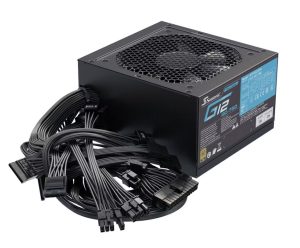
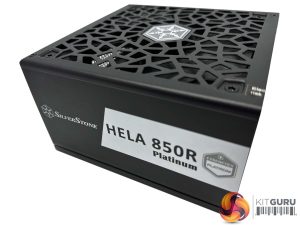
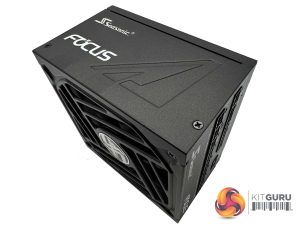
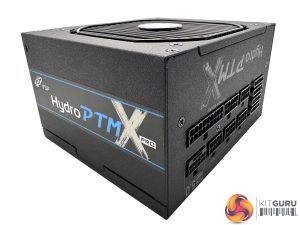
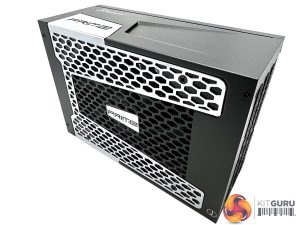
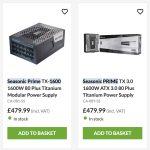
0 comments :
Post a Comment